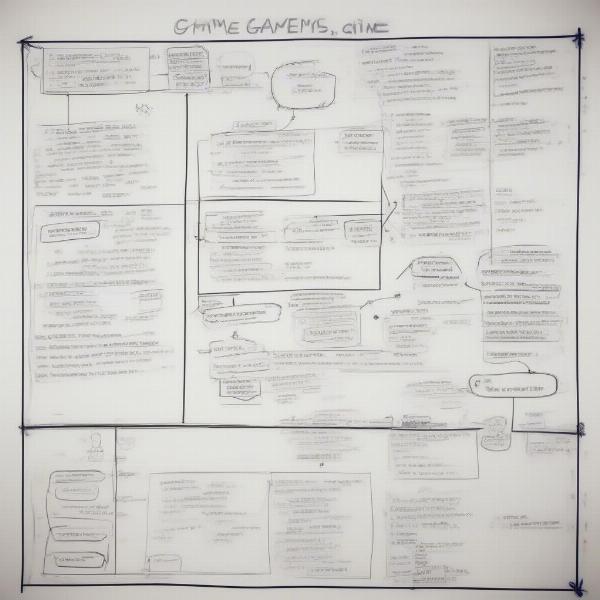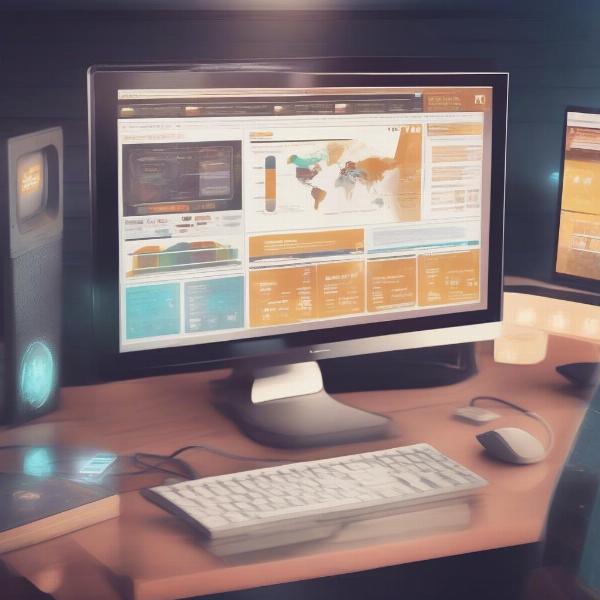Making indie games can be a rewarding experience, transforming your creative visions into playable realities. This journey, while exciting, can seem daunting for aspiring developers. This guide aims to demystify the process, providing a step-by-step approach to How To Make Indie Games, from concept to completion.
Similar to the growing popularity of virtual reality games, the indie game scene is booming. For a deeper dive into VR gaming costs, check out our article on how much do virtual reality games cost.
Conceptualization and Design: The Foundation of Your Indie Game
Before writing a single line of code, a solid foundation is crucial. This phase involves brainstorming, defining your game’s core mechanics, and outlining its narrative. Think about the genre, target audience, and the overall experience you want to create. What makes your game unique? What problem does it solve for the player? These are key questions to consider.
Defining Your Game’s Core Loop
The core loop is the heart of your game, the repetitive cycle of actions that keeps players engaged. A well-designed core loop is addictive and rewarding, driving players to keep coming back for more. Think of games like Stardew Valley, where the core loop revolves around farming, mining, and building relationships. Identifying your core loop early on helps you streamline development and focus your efforts.
Crafting a Compelling Narrative
While not all indie games require a complex story, a compelling narrative can elevate the player experience. Even simple narratives can provide context and motivation for the player’s actions. Consider the narrative’s role in your game. Will it be a driving force, or a subtle backdrop to the gameplay?
 Indie Game Design Process: Conceptualization, Prototyping, and Development
Indie Game Design Process: Conceptualization, Prototyping, and Development
Choosing the Right Tools: Empowering Your Indie Game Development
The tools you choose will significantly impact your development process. From game engines to art software, selecting the right tools can streamline your workflow and maximize your efficiency.
Game Engines: The Backbone of Your Project
Game engines provide the framework for building your game. Popular choices include Unity, Unreal Engine, and Godot. Each engine has its strengths and weaknesses, catering to different game genres and development styles. Unity is known for its versatility and ease of use, making it a popular choice for beginners. Unreal Engine offers stunning visuals and advanced features, while Godot is a completely free and open-source option.
Art and Audio Tools: Bringing Your Game to Life
Visuals and sound are crucial for immersing players in your game world. Digital painting software like Krita and Photoshop can be used for creating 2D art, while Blender is a powerful tool for 3D modeling and animation. Audacity and FL Studio are popular choices for audio editing and music composition.
Do you have to buy games for VR? Find out in our article do you have to buy games for vr.
Programming and Implementation: Building Your Indie Game
With your design and tools in place, it’s time to start bringing your vision to life. This stage involves programming the game’s mechanics, creating assets, and implementing the user interface.
Scripting and Game Logic
Scripting is the process of writing code that defines how your game functions. Understanding programming concepts is essential for implementing game mechanics, AI, and user interactions. Many game engines use C#, C++, or their own scripting languages.
Asset Creation and Integration
Assets are the visual and auditory elements that make up your game. This includes character models, environments, sound effects, and music. Creating or acquiring high-quality assets is crucial for enhancing the player experience.
Testing and Refinement: Polishing Your Indie Game
Testing is an iterative process that involves identifying and fixing bugs, balancing gameplay, and refining the user experience. Thorough testing ensures a polished and enjoyable final product.
Playtesting and Feedback
Gathering feedback from playtesters is essential for identifying areas for improvement. Playtesters can provide valuable insights into the game’s balance, difficulty, and overall enjoyment.
Is pirating games common on PC? Learn more about it on our dedicated blog post: is it popular to play pirated games on pc. This practice raises ethical questions and can impact the indie game development landscape.
Marketing and Distribution: Sharing Your Indie Game with the World
Once your game is complete, it’s time to share it with the world. This involves choosing the right distribution platforms and marketing your game to your target audience. Platforms like Steam, Itch.io, and mobile app stores offer various options for reaching players. Developing a marketing strategy can help you generate buzz and attract players to your game.
Can GameMaker Studio 2 create 3D games? Discover the answer in our article can gamemaker make 3d games. This engine, known for its 2D capabilities, has evolved to offer 3D development options, expanding possibilities for indie game creators.
Related Topics: Expanding Your Indie Game Development Knowledge
Funding Your Indie Game Project
Securing funding for your indie game project can be a significant challenge. Exploring options like crowdfunding platforms, grants, and personal investment can help you secure the resources you need to bring your game to life.
Building a Development Team
Collaborating with other developers, artists, and musicians can accelerate your development process and bring new perspectives to your project. Building a strong team requires effective communication, collaboration, and shared vision.
 Indie Game Marketing Strategy: Reaching Your Target Audience
Indie Game Marketing Strategy: Reaching Your Target Audience
Can you play your Steam games on Xbox? Explore the compatibility between these platforms in our article: can i play my steam games on xbox.
Conclusion: Your Journey to Indie Game Development
Creating indie games is a multifaceted process requiring creativity, technical skills, and perseverance. This guide provides a roadmap for navigating the challenges and rewards of indie game development, from the initial concept to sharing your creation with the world. Remember to embrace the iterative nature of game development, constantly learning and refining your skills along the way. Start small, experiment, and most importantly, have fun bringing your indie game ideas to life.

